These problems are often not caused by a single cause, but are the result of a combination of material properties, slitting equipment, process parameters, and operating techniques. Therefore, the "ultimate solution" must be a systematic project.
Here's a detailed analysis and ultimate solution to these challenges:
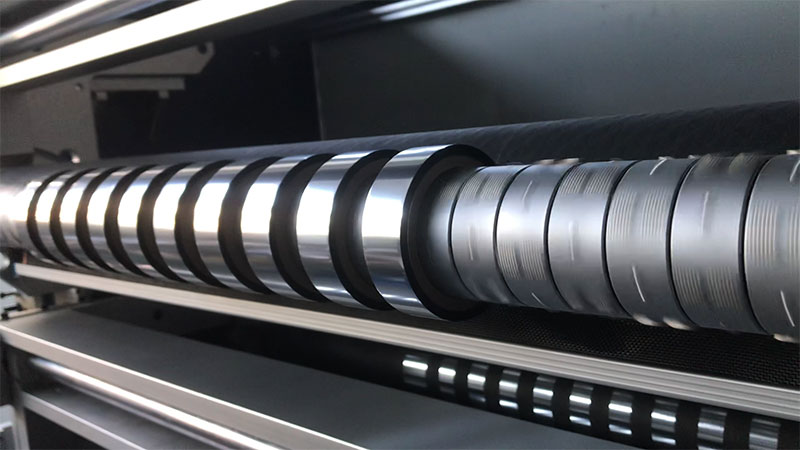
First, analysis of the root causes of core problems
1. Thin foil (such as 12μm or even thinner PET foil):
◦ Problem: Low tensile strength, easy to be stretched, broken or internal stress under slitting tension.
◦ Performance: The foil is broken during slitting, the foil surface is wrinkled after winding, and the end face of the film roll has a "chrysanthemum pattern".
2. Special width (e.g. 1.5m or more):
◦ Problem: The larger the width, the greater the requirements for the rigidity, flatness and correction system of the slitting equipment.
◦ Performance: Uneven winding ("cabbage" shape), shaking of the slitting knife leading to burrs, uneven unwinding tension leading to serpentine deviation.
3. Easy to curl (caused by high internal stress or coating characteristics):
◦ Problem: The material itself has a strong tendency to curl in one direction, making it difficult to spread and reel flatly.
◦ Performance: The edges float and cannot be aligned during slitting, and the stress of the core part is concentrated to form hard lumps or burst ribs after winding.
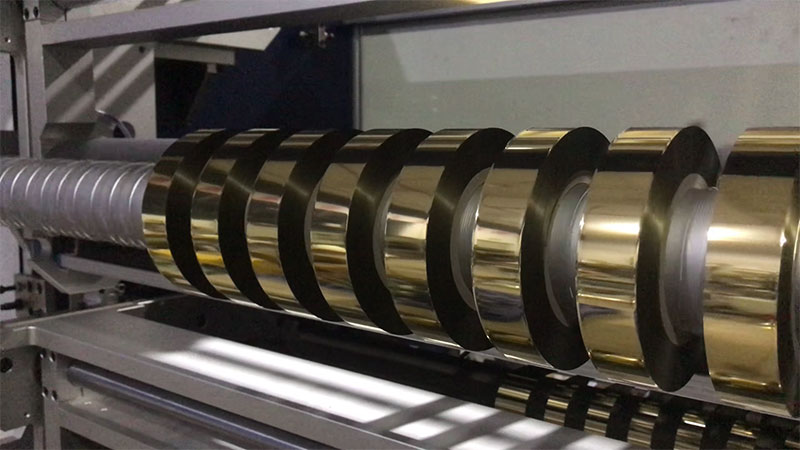
Second, the ultimate solution: systematic research
The ultimate solution = high-performance equipment + special accessories + fine craftsmanship + environmental control
1. Equipment is the foundation: Invest in a professional slitting machine
For high-end hot stamping foil slitting, it is essential to use a high-precision servo slitting machine with the following key features:
• Fully automatic tension control system: This is the most important component. A closed-loop tension sensor must be used to monitor and fine-tune the tension between unwinding, rewinding and traction in real time to maintain a constant attitude. For thin foils, the tension control accuracy needs to be within 0.2kgf.
• High rigidity frame: The wide slitting frame must ensure that the frame is absolutely strong and avoid small vibrations during high-speed operation, otherwise the slitting quality cannot be discussed.
• Dual Guiding System (EPC):
◦ Unwinding and correction: ensure that the edge position of the raw material is always consistent when it enters the slitting knife.
◦ Winding and correction: Ensure that the narrow strips after slitting can be neatly rolled onto the paper core. Ultrasonic or CCD edge detection methods should be used, and the sensitivity is much higher than that of ordinary photoelectric sensors.
• Floating roller tension buffer system: It can effectively absorb instantaneous fluctuations in tension, providing gentle tension control for thin foils and preventing breakage or stretching.
• Professional winding system:
◦ Center coiling + surface contact roller (press roller): The surface contact roller provides the necessary contact pressure to expel air and "flatten" the crimped material, which is essential for overcoming the crimping challenge. The pressure and hardness of the roller need to be adjusted.
◦ Taper tension control: As the coil diameter increases, the system should be able to automatically and linearly reduce the tension to prevent the coil core from being crushed.
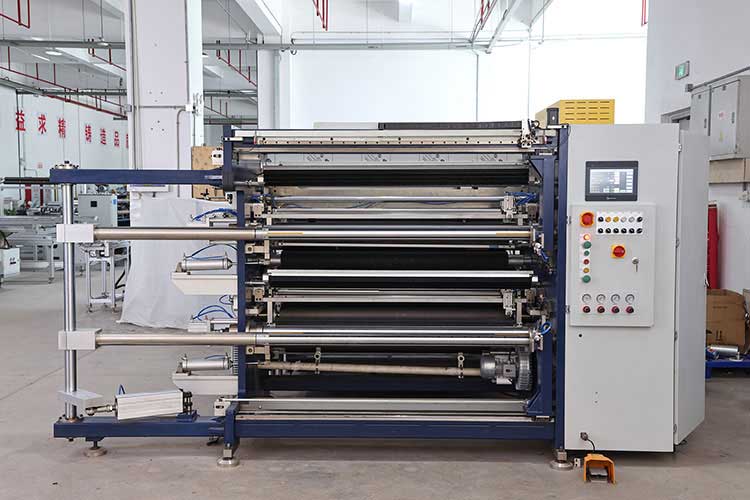
2. Process is the core: refined parameter adjustment
• Tension setting: Follow the principle of "better to be small than big". From unwinding to rewinding, the tension should be set to a smooth transition. The starting tension is just enough to eliminate the looseness of the material.
• Tool selection and matching:
◦ Upper knife: High-quality coated or ceramic blades must be used to maintain extreme sharpness. Choose a sharper angle (e.g., 30°) at the knife angle to achieve "slip cut" instead of "chopping" and reduce slitting resistance.
◦ Lower knife: Use ultra-narrow width (less than 1mm) groove knife to reduce the contact area with the material and reduce friction and static electricity.
◦ Clearance and depth: adjust to the best state - the tip is just cut into the lower groove by 0.5-1mm, and a crisp "rustling" sound is heard, without harsh noise. This is a key point that requires experience and repeated debugging.
• Slitting speed: faster is not always better. For thin and curly materials, low to medium speeds (e.g. 200-300 m/min) tend to yield better quality than high speeds because it gives the guiding and tensioning systems more adequate reaction time.
• Roller pressure: For crimped materials, increase the pressure of the roller appropriately to help the material be flat and winded. The pressure should be uniform and can be automatically adjusted with the increase of the roll diameter.
3. Environment and Operation: A detail that cannot be overlooked
• Ambient temperature and humidity control: Hot stamping foil is sensitive to temperature and humidity. The ideal environment should be controlled at a temperature of 23±2°C and a humidity of 50%±5%RH. A stable environment can reduce the deformation of the material due to moisture absorption or thermal expansion and contraction.
• Static eliminators: Install static elimination equipment such as ion air rods at slitting knives and winding points. Static electricity is the culprit that causes film adsorption, fluttering, uneven winding, and dust adsorption.
• High-quality paper core: Use a paper core or plastic core with high strength, high concentricity, and a smooth surface. A deformed paper core is the root of all evil.
• Skilled operators: Operators need to understand the properties of materials and be able to fine-tune parameters in a timely manner by listening to sound and looking at the end face.
Third, special countermeasures for specific problems
| puzzle | Special countermeasures |
| The thin foil is easy to break and wrinkle | 1. Very low tension: Reduce the tension to the lowest value where the material can run smoothly.
2. Full wrapping: When winding, use a section of protective film with a lower viscosity to wrap it together with hot stamping foil to provide additional support and prevent stress concentration on the core.
3. Avoid excessive slitting: Minimize the number of slitting strips, and wide slitting can better maintain the stability of the material itself. |
| The special width is deviated and uneven | 1. Double deviation correction guarantee: ensure that the unwinding and rewinding correction systems work properly and the sensitivity is moderately set.
2. Add flattening rollers: Add arc flattening rollers or threaded flattening rollers after unwinding to eliminate the internal stress and curling tendency of the material.
3. Check equipment parallelism: Regularly calibrate all rollers of the equipment to ensure they are absolutely parallel. |
| Easily curling material flutters at the edges | 1. "Reverse pre-bending" treatment: Set up multiple guide rollers on the unwinding path so that the material bypasses the guide rollers in the opposite direction of their natural curl, thereby offsetting part of the crimping stress.
2. Skillful use of pressure rollers: The position and pressure of the pressure rollers are the key, and the material needs to be "smoothed" before winding.
3. Reduce speed: Give the material enough time to smoothly flatten and rewind. |
summary
To solve the cutting problem of thin foil, extra-wide width, and easy-to-curl hot stamping foil, there is no single "magic pill". The ultimate solution lies in building a systematic capability based on high-precision slitting equipment and debugging of refined process parameters, supplemented by a stable environment and skilled operation.
Recommendation: If you are a slitting processor, investing in a high-end slitting machine that meets the above requirements is a long-term solution. If you are a foil producer or user, in-depth cooperation with a slitting factory with such technology and equipment is the most effective way to ensure product quality.
I hope this detailed analysis and solution will be helpful to you!



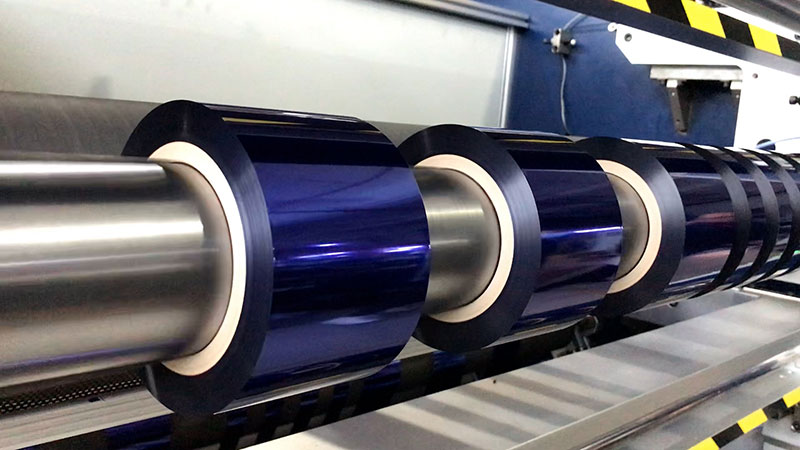
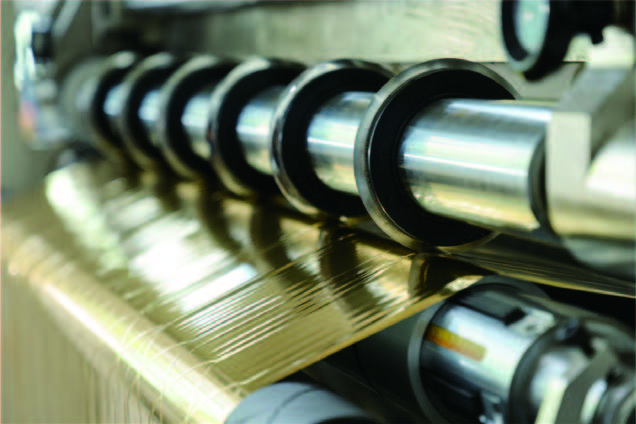
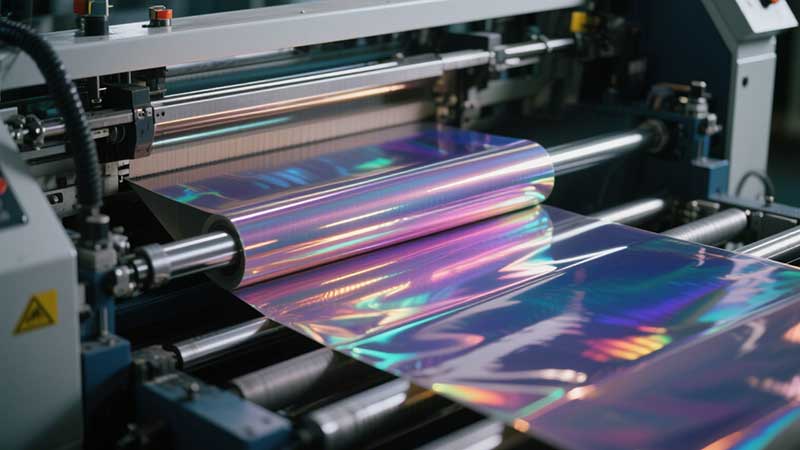
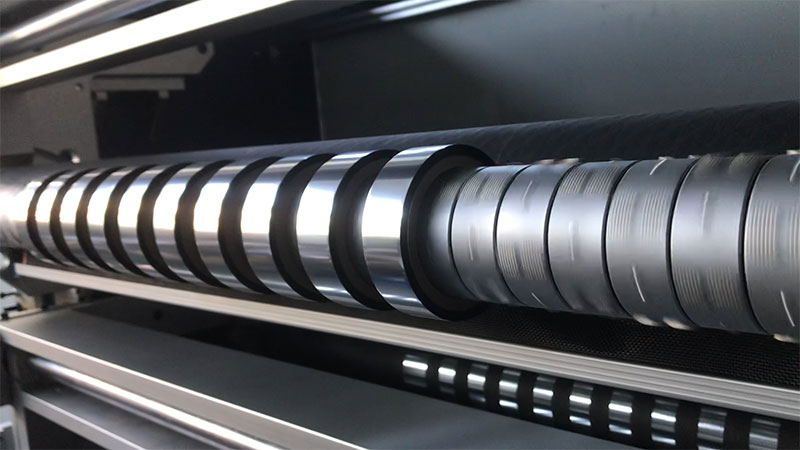
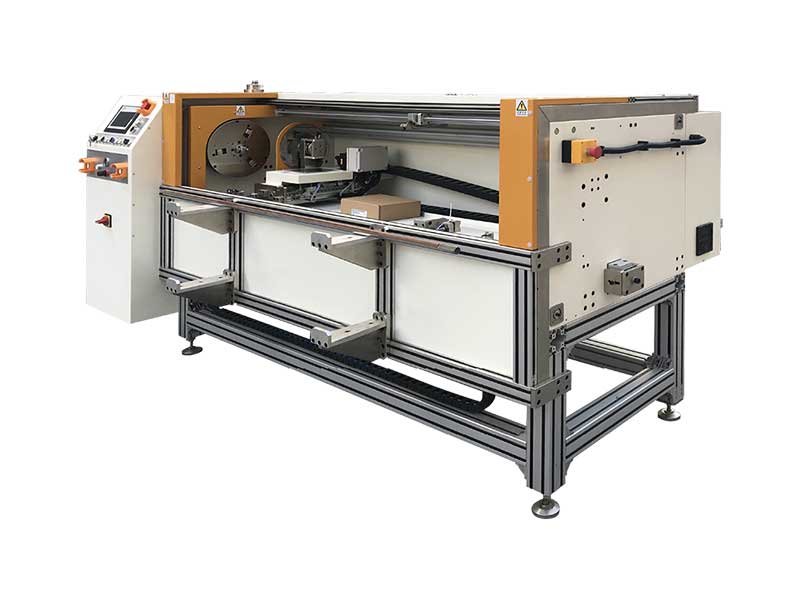 Automatic Foil Roll Cutting Machine
Automatic Foil Roll Cutting Machine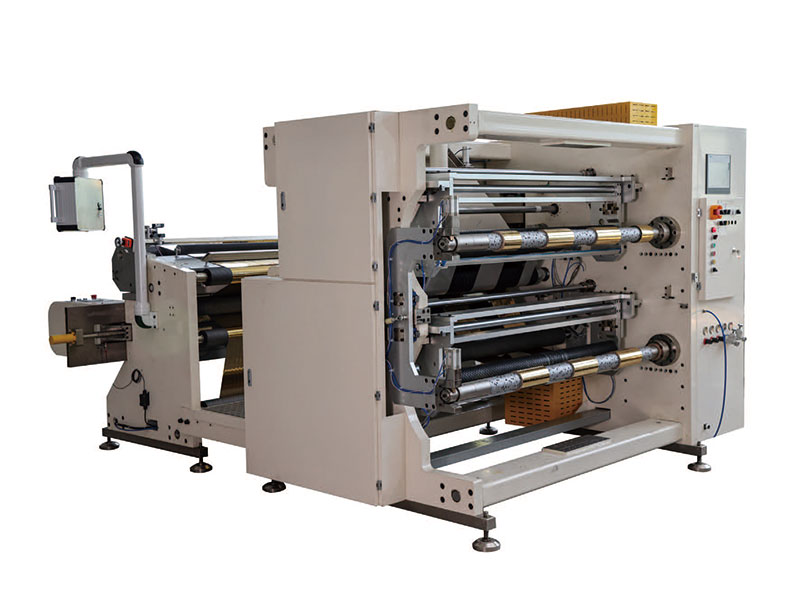 1400mm Hot Stamping Foil Slitting Machine
1400mm Hot Stamping Foil Slitting Machine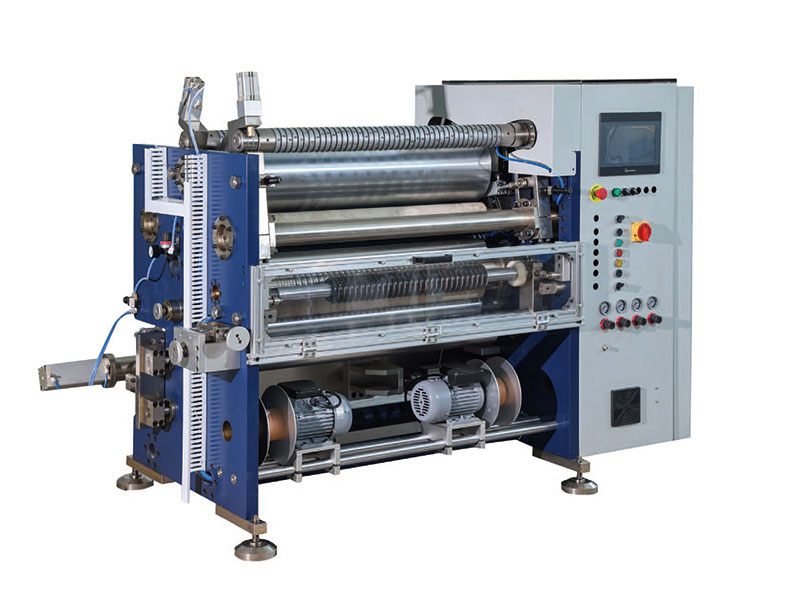 800mm Hot Stamping Foil Slitting Machine
800mm Hot Stamping Foil Slitting Machine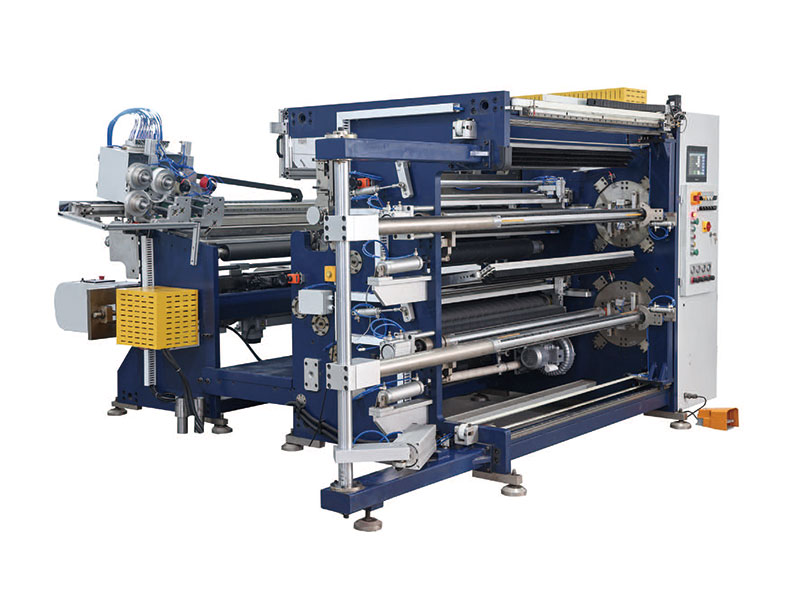 1350mm Hot Stamping Foil Slitting Machine
1350mm Hot Stamping Foil Slitting Machine Manual Foil Roll Cutting Machine
Manual Foil Roll Cutting Machine 1350mm/1600 Foil Slitting Machine
1350mm/1600 Foil Slitting Machine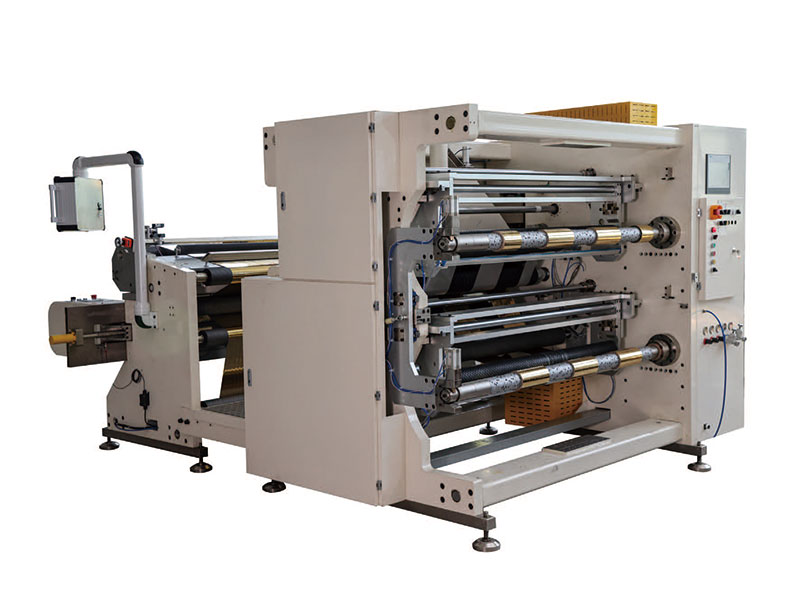 1400mm Aluminium Foil Slitting Machine
1400mm Aluminium Foil Slitting Machine 1600mm Foil Slitting Machine
1600mm Foil Slitting Machine

